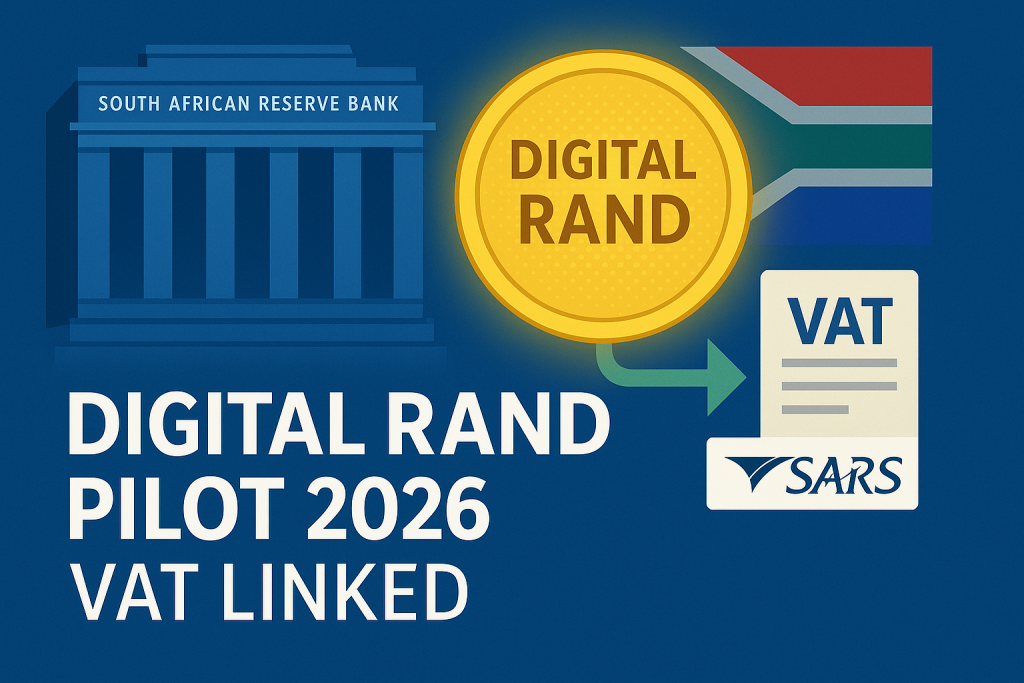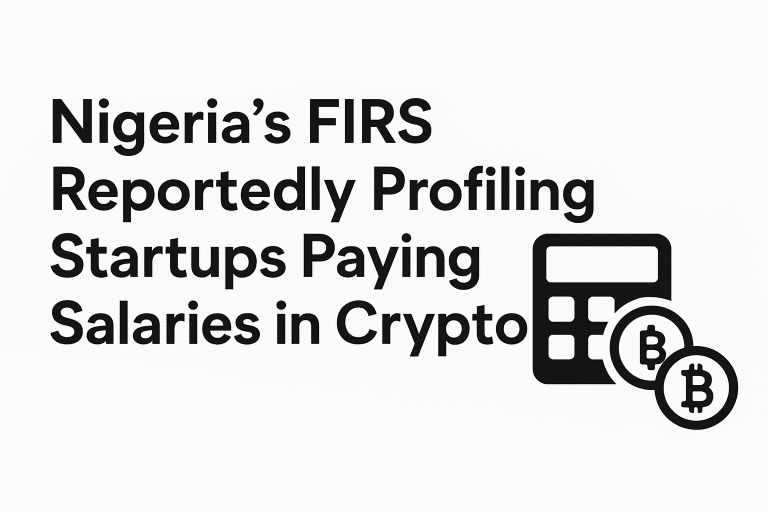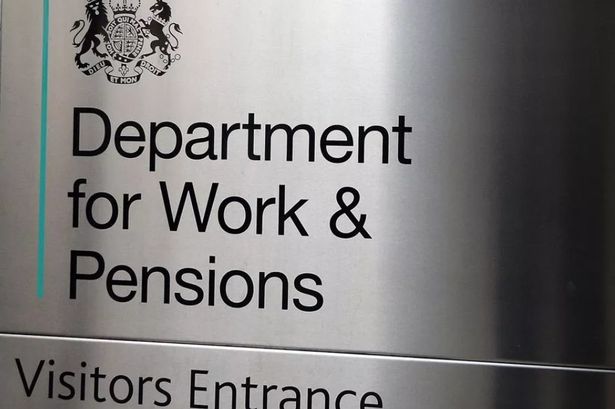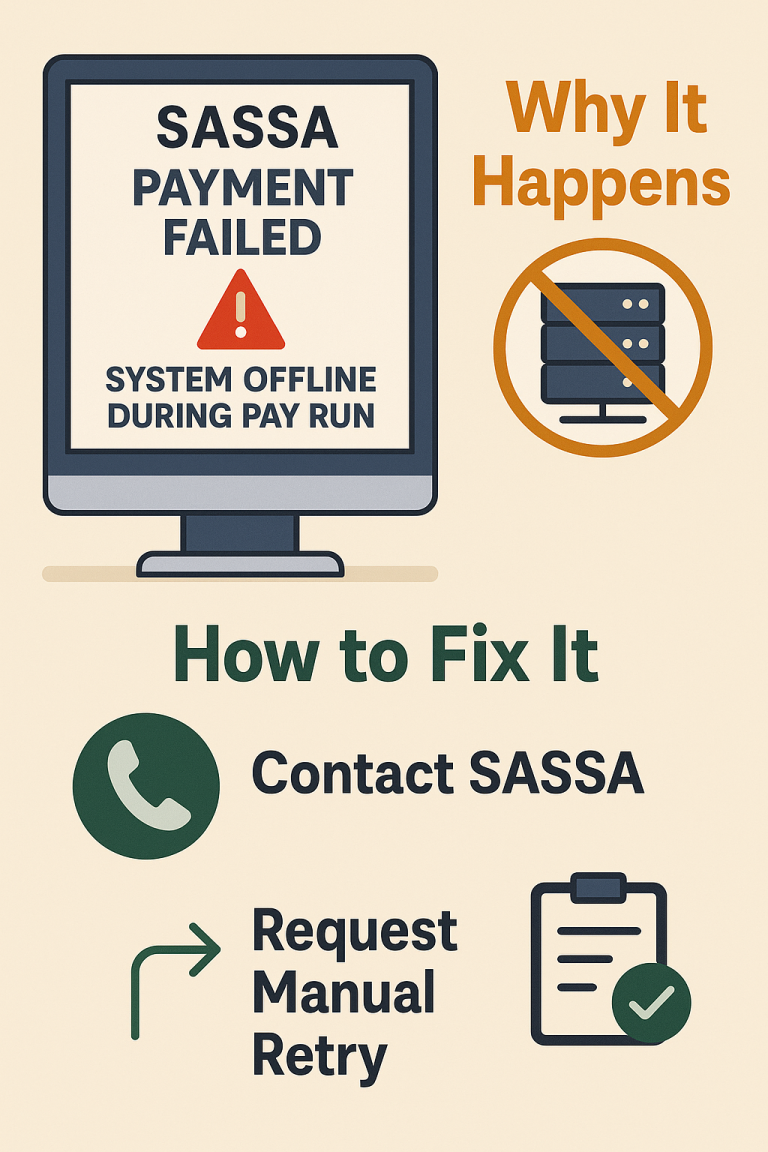South African Reserve Bank Mulls Digital Rand Pilot for VAT-Linked Transactions in 2026
The South African Reserve Bank (SARB) is quietly preparing the next phase of its digital currency journey. Insiders reveal that by 2026, SARB plans to launch a Digital Rand pilot focused on VAT-linked transactions for small and medium enterprises (SMEs). Unlike crypto experiments, this is a central bank digital currency (CBDC) initiative state-backed, regulated, and fully integrated with the South African Revenue Service (SARS).
See Also: SASSA SRD Status Check

The goal is simple: make VAT reporting automatic, transparent, and fraud-proof, while giving SMEs easier access to formal financial systems. If successful, South Africa could become the first African country to link a CBDC directly with taxation.
Install: SASSA App
Why a Digital Rand Now?
Closing the VAT Gap
South Africa loses billions of rand annually to VAT fraud and underreporting. A Digital Rand that logs every transaction instantly with SARS could slash this leakage.
[Image Placeholder: Infographic showing “VAT Gap: R30bn/year” with arrows to “Digital Rand → Instant Reporting → Reduced Fraud”.]
SME Inclusion
SMEs often struggle with compliance. Digital Rand wallets would automate tax obligations, making it easier for small businesses to stay in the formal economy.
[Image Placeholder: Infographic: SME shop icon with “Digital Rand Wallet: Tax Done Automatically” label.]
How the Pilot Could Work
Wallets for Businesses
SMEs would be issued Digital Rand wallets directly linked to SARS systems. Each sale would automatically calculate and record VAT.
Controlled Rollout
The pilot is expected to launch in Gauteng and Western Cape provinces first, focusing on retail and services sectors.
Check Out (For SASSA Beneficeries): SASSA Payment Dates
Benefits for Government and Business
Government Gains
- Increased VAT compliance
- Reduced fraud and shadow economy activity
- Real-time data for fiscal planning
Business Gains
- No more manual VAT filings
- Lower compliance costs
- Faster refunds due to automated systems
Challenges and Criticisms
Privacy Concerns
Critics warn that linking all payments directly to SARS risks over-surveillance and loss of business confidentiality.
Tech Readiness
SMEs in rural areas may lack digital infrastructure. Without inclusive rollout, the project risks widening the digital divide.
Regional and Global Context
Africa’s CBDC Race
Nigeria launched the eNaira, but adoption has been weak. South Africa hopes to avoid those mistakes by tying the Digital Rand to real incentives (VAT simplification).
Lessons from Abroad
China’s e-CNY trials and Europe’s digital euro experiments are being closely studied. South Africa’s edge is its taxation focus, making it unique.
Business and Policy Guidance
For SMEs
- Prepare to adopt digital payment infrastructure.
- Train staff on using wallets.
- Keep records aligned with digital reporting.
H3: For Policymakers
- Ensure privacy protections are in place.
- Subsidize digital infrastructure for rural SMEs.
- Run education campaigns to build trust.
Conclusion
South Africa’s Digital Rand pilot could be a breakthrough in modernizing both payments and taxation. By directly linking VAT to transactions, it promises higher revenue, lower compliance costs, and less fraud.
If SARB moves ahead with its 2026 pilot, South Africa will position itself not only as an African leader in CBDCs but also as a global pioneer in using digital money to strengthen fiscal systems.
The Digital Rand won’t just be about payments it will be about building trust, efficiency, and inclusion in South Africa’s economy.






